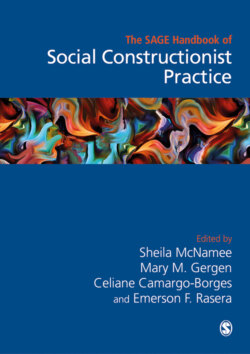Читать книгу The Sage Handbook of Social Constructionist Practice - Группа авторов - Страница 47
На сайте Литреса книга снята с продажи.
Arts-based Research
ОглавлениеArts-based research is a participatory approach combining art and research together. It uses the creative arts, such as dance, painting, and photography to address social questions (Leavy, 2009). It focuses on engaging ways of promoting a participatory research path where new ideas and articulations might emerge. The arts can be used to collect or analyze data or as a way to represent findings. When we embrace the transformative potential of inquiry, the integration of the arts and participatory methods contribute to our understanding of social issues, largely through their relevance and accessibility. For example, we might explore how visual art serves as a method of exposing and altering unequal relations of power, privilege, and oppression. How might researchers use the visual arts for studying race, class, gender, and sexuality? There are several good examples, but to identify one, we can note how the photography of Robert Mapplethorpe – largely in the 1980s – raised social awareness concerning homosexuality and the AIDS epidemic (Smith, 2010).
Other art forms such as theater, drama, poetry, dance, and music provide powerful means for engaging communities in the full participation of social transformation. Capturing the sentiment of what is happening in a given community through artistic expression can be experienced as quite different from collecting the same information through surveys, questionnaires, Likert scales, or interviews. We tend to think of the arts, by definition, as vehicles for creativity and imagination. When recognized as a form of research, we invite broader participation that is likely to result in collaboratively achieved transformation.
One example of a method within arts-based research is photovoice.
